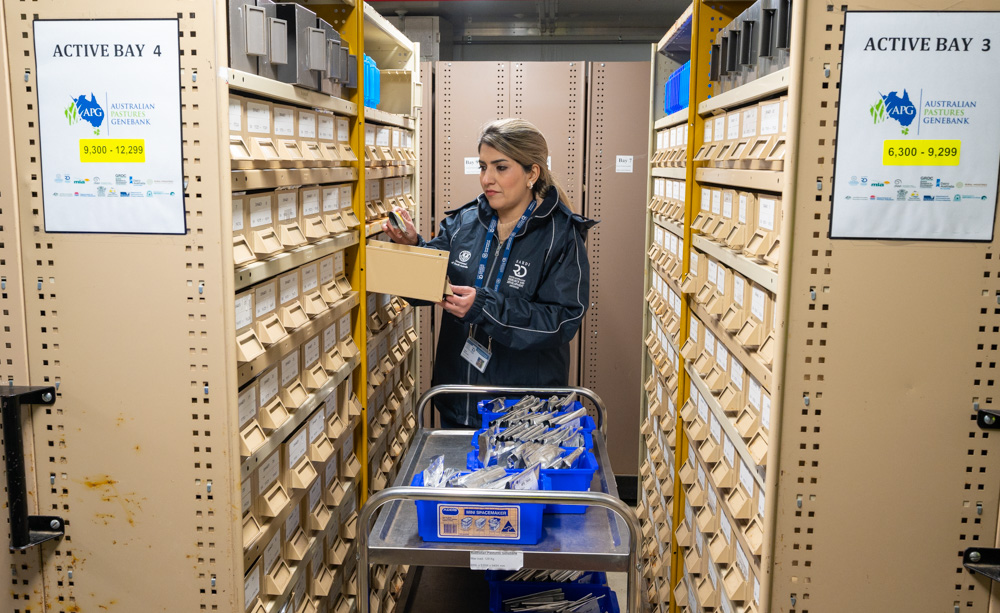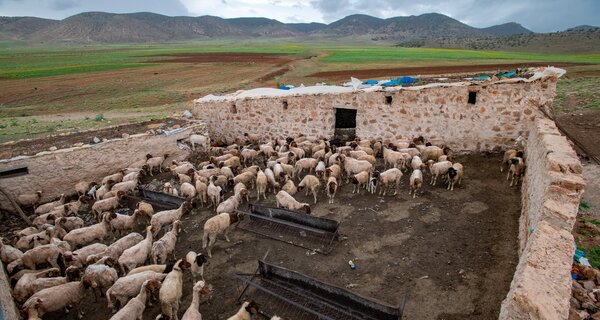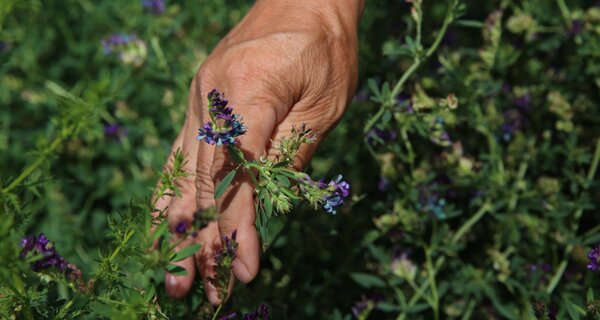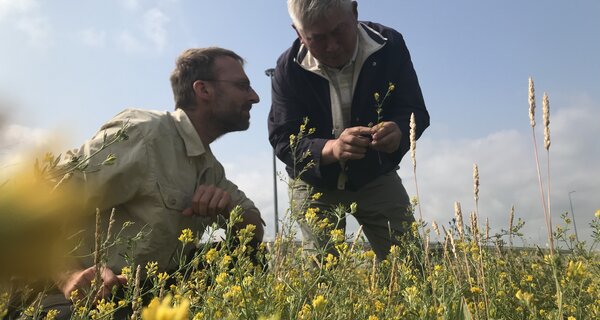Change Cows' Diets, Support the Environment

Trevor Rowe (SARDI) measuring the plant height of alfalfa at the Waite Institute, Adelaide, South Australia. Photo: Michael Major for Crop Trust
4 May 2023
When it comes to sustainability, the livestock sector has a bad reputation. One way to reduce its environmental impact is to breed better forages: the grasses and other plants that are eaten by farm animals. The genetic resources to do so are already at hand, experts say.
Cattle, sheep and other ruminants on farms and natural grasslands in temperate climates eat a selection of forage plants, mainly grasses and legumes. This diet is one of the reasons these farming systems contribute so significantly to global warming, biodiversity loss and water contamination. When ecosystems that absorb and store carbon, such as forests and wetlands, are cleared for farming, that land goes from being a sink to a net source of carbon emissions.
But not all hope is lost for steak lovers. The means to improve the diets of domestic livestock is sitting in genebanks around the world, according to a new strategy aimed at optimizing the use of the diversity of temperate forages for better sustainability.
“There is a lot of potential in the temperate forages that are conserved in genebanks, because these species have the genetic traits needed to breed improved varieties,” said the strategy’s author Mike Dodd, senior scientist at AgResearch, a Crown Research Institute in New Zealand. “Making the most of temperate forages is about understanding the treasure that we already have tucked away.”
The strategy, based on an assessment of genebank collections of temperate forages around the world, is one of a series of strategies facilitated by the Crop Trust to guide actions for conserving and using crop genetic diversity.
“The genetic diversity of temperate forages can be harnessed to mitigate the notorious environmental impact of intensive livestock systems. That is one more reason for having a strategy to conserve and use this diversity,” said Peter Giovannini of the Crop Trust, who is coordinating the strategy project.
The Truth About Cows and Sheep
Temperate grazing lands cover 13% of the world’s land area, including farms and rangeland systems in Russia, Europe, China and North America in the northern hemisphere, and South America, southern Africa, Australia and New Zealand in the south.
On these grasslands graze hundreds of millions of cattle, sheep and other ruminants, whose meat or milk are destined for human consumption, and very important both nutritionally and culturally.
The better the quality of their feed, the better the end product.
“The commercial livestock industry has a long history of breeding improved cultivars of temperate forages,” Dodd said. “Traditionally, they’ve bred for qualities that support productivity: forages which grow fast, have high carbohydrate and protein contents, and are high in energy.”
Based on productivity alone, the effort has paid off. Globally, people get more than a quarter of their protein from livestock systems, and demand for livestock products continues to grow.
At the same time, the industry has come under intense scrutiny for its environmental impact. For example, livestock contribute to greenhouse gases emissions through the methane they emit and to contamination of groundwater because of the nitrogen in their urine.
The industry is feeling the heat—both from governments trying to mitigate the damage and from the environment itself.
“The livestock industry is very concerned about climate change. They’re already seeing the impacts of it,” Dodd said. “They’re also dealing with new rules and regulations. They must look at how they can keep producing with ruminants amid these changing conditions and improve sustainability.”
One of the things they’re looking at is forages.

Negar Nikmanesh retrieving seed in active collection of the Australian Pastures Genebank. Photo: Michael Major for Crop Trust
You Are What You Eat
Efforts to breed new varieties of forages with genetic traits that can lead to improved sustainability are already the focus of scientific research, Dodd says.
“For example, some forages have a compound called tannin, which reduces ruminants’ methane emissions. As another example, in New Zealand, we’re working with narrow-leaved plantain, which was formerly considered a weed, but which appears to reduce the nitrogen content of livestock urine,” he said.
This work involves a radical shift in which genetic traits are most valued for breeding new forages. Conventionally, traits related to productivity have been in favor. In the future, the preference is likely to move to less conventional traits that result in lower environmental impact and greater tolerance of climatic changes.
Which means identifying which specific traits are most useful and in which plants they can be found.
But, as Dodd found in consultations with the temperate forage conservation community, it’s not always clear which species hold which traits, or which species are available from where.
“There is a huge range of species of temperate forages, and hundreds of genebanks in dozens of countries are supplying the needs of countless users in the research and development community worldwide,” Dodd said. “So there is a lot of opportunity to find the best diversity, but they’ll need to work together better.”
The next step is to develop a clearer picture of the full extent of the genetic diversity available, and then build networks between collections to help them share information and seed samples.
“One thing I observed was that this community has real passion, real goodwill and a real desire for collaboration and connection,” Dodd said. “And that kind of goodwill can drive change, first in the genebanks, and, ultimately, in the livestock sector as a whole.”
Categories: Global Crop Conservation Strategies, Temperate forages
About the Global Crop Conservation Strategy project
The development of this Global Crop Conservation Strategy was funded by the German Federal Ministry of Food and Agriculture (BMEL) as part of a three-year project led by the Crop Trust: “Breathing New Life into the Global Crop Conservation Strategies: Providing an Evidence Base for the Global System of Ex situ Conservation of Crop Diversity.”





